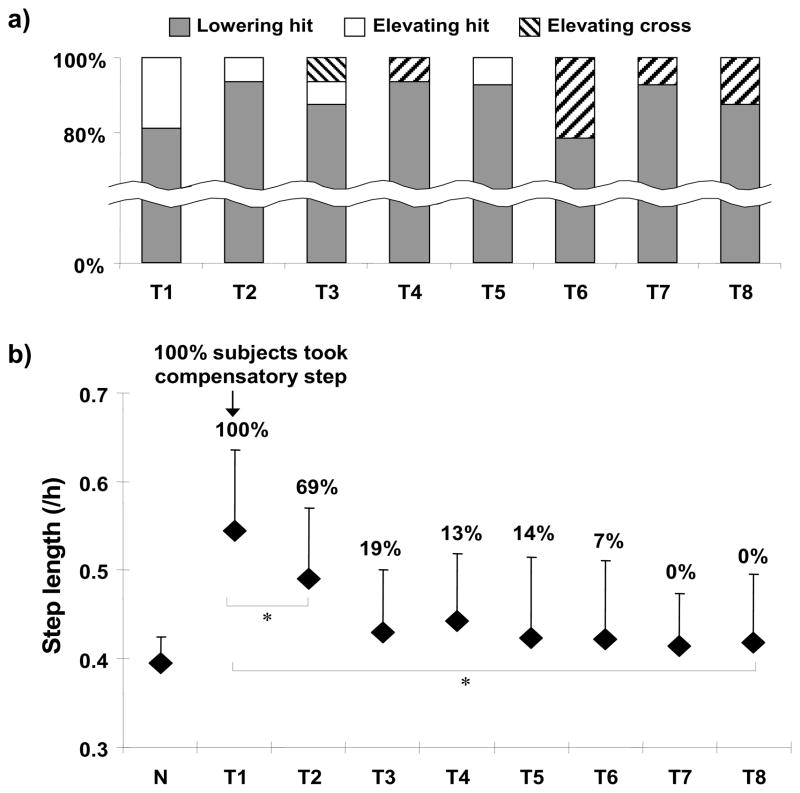Figure 3.
Shown are a) the percentage of the strategy used for trip recovery from each of the 8 trips (T1–T8), and b) the incidence of taking a compensatory step (indicated as a percentage on the top of each trial) and the average recovery step length across 8 trips. a) Three strategies were observed: lowering-hit strategy (filled), elevating-hit strategy (unfilled), and elevating-cross strategy (hatched). Overall, over 75% of the subjects used the lowering strategy to recover from a trip. b) The group means (±SD) of the recovery step length (normalized by subjects’ height [/h]) are shown for the 8 trip trials. A decrease in the recovery step length was associated with a decrease in the incidence of excessive forward instability with a compensatory step (the incidence is indicated on each trip trial). N represents the regular walking trial prior to the first trip. * p < 0.05.

